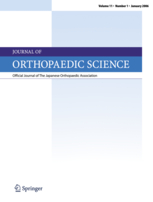
GENERAL ORTHOPAEDICS
Hydroxyapatite + collagen vs. beta-tricalcium phosphate in bone substitution implantation
J Orthop Sci. 2016 May;21(3):373-80.130 patients undergoing bone substitution implantation were randomized to one of two synthetic porous composite groups for the purpose of comparing the efficacy and safety throughout a 24-week period: (1) porous hydroxyapatite/collagen composite (HAp/CoL) or (2) porous beta-tricalcium phosphate (beta-TCP). Results demonstrated that a significantly larger proportion of patients in the HAp/CoL had "highly effective" implants and regeneration when compared to the beta-TCP group at 18 and 24 weeks. However, the number of cases exhibiting side effects, such as swelling, rubor, increased effusion, and infection, was also higher in the HAp/CoL group when compared to the beta-TCP group.
Unlock the full ACE Report
You have access to {0} free articles per month.Click below to unlock and view this {1}
Unlock NowCritical appraisals of the latest, high-impact randomized controlled trials and systematic reviews in orthopaedics
Access to OrthoEvidence podcast content, including collaborations with the Journal of Bone and Joint Surgery, interviews with internationally recognized surgeons, and roundtable discussions on orthopaedic news and topics
Subscription to The Pulse, a twice-weekly evidence-based newsletter designed to help you make better clinical decisions
Exclusive access to original content articles, including in-house systematic reviews, and articles on health research methods and hot orthopaedic topics
Or upgrade today and gain access to all OrthoEvidence content for just $1.99 per week.
Already have an account? Log in


Subscribe to "The Pulse"
Evidence-Based Orthopaedics direct to your inbox.
{0} of {1} free articles
Become an OrthoEvidence Premium Member. Expand your perspective with high-quality evidence.
Upgrade Now












































































